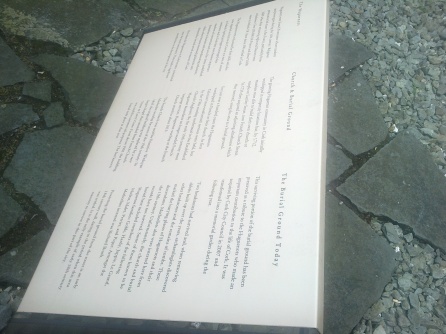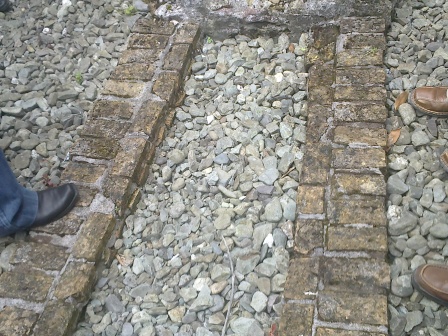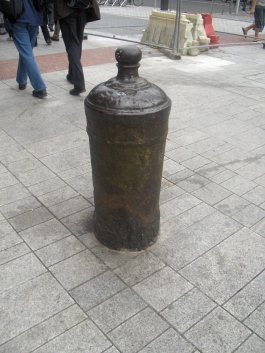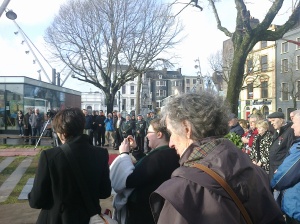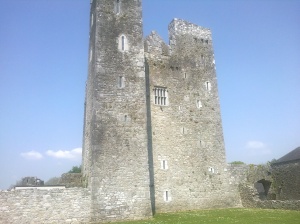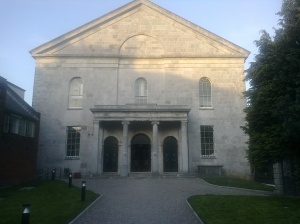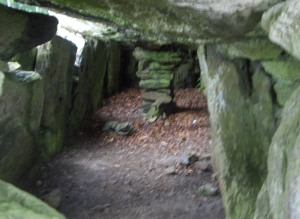Oiche Shamhna
I didn’t have time to do any research on haunted historic sites this year but instead I will post up a link to a very interesting article on the origins of many of our Halloween traditions in this part of the world
https://pantherfile.uwm.edu/barnold/www/lectures/holloween.pdf
Happy Halloween everyone 🙂
Sir Henry Browne Hayes
I was going to write a post on this fascinating Cork character but I think it’s better to let someone far more qualified tell the story
My Kingdom For A Horse
“And thus I clothe my naked villany
With old odd ends stolen out of holy writ;
And seem a saint, when most I play the devil.” Shakespeare, Richard III (Act 1 Scene 3)
There seems to be no getting away from Richard III right now. Anyone familiar with Shakespeare’s play Richard III will remember him as one of the great villains. A scheming hunchback who is willing to do anything and kill anyone to get on the throne. Even going so far as to kill his young nephews, Richard and Edward, the Princes in the Tower. In Shakespeare’s version of history it is eventually the heroic Henry Tudor who puts an end to Richard and assumes the throne as Henry VII.
Of course there are plenty of historians who have had their doubts about this version of Richard. Shakespeare certainly wasn’t above embellishing the truth if it made for good drama and he was also writing at a time when Elizabeth 1 was on the throne. It’s not like she would have taken kindly to anyone casting doubts on the heroic legacy of her grandfather. Any sources Shakespeare had access to also would probably have been overwhelmingly in favour of Henry VII and very happy to portray Richard as the villain. Richard may not have been the homicidal villain he was made out to be.
What can be known for certain about Richard is that he was the last of the Plantagenet dynasty. When his brother Edward IV died in April 1483, Richard was named Lord Protector until his nephew Edward could be crowned king. However when it was publicly declared that young Edward and his brother Richard were illegitimate because of doubts regarding the legality of their parents marriage, their uncle Richard was declared king. Not long afterwards the two boys stopped appearing in public. Whether Richard was really responsible for their death will probably never be known. Illegitimate or not, they could have become the focus of any rebellions against his rule. This was a turbulent period in English history, known as the War of the Roses. The two rival branches of the Plantagenet dynasty had been fighting on and off since 1455 for control of the English throne. There was still a lot of unrest and even if Richard felt he was the rightful king there would always be those who believed otherwise. It was in August 1485 that a rebellion led by Henry Tudor (later Henry VII) defeated Richard III. Richard died at the Battle of Bosworth field, the last English king to die in battle. Richard’s naked body was thrown over the back of a horse and displayed throughout the streets, before being buried at Greyfriars Church, Leicester. Henry had to make sure Richard wouldn’t become a martyr and his burial place a shrine.

Portrait of Richard III
A few weeks ago, a group of archaeologists from University of Leicester Archaeological Services, and with the support of Leicester City Council and the Richard III society, set out to find the burial site. The Greyfriars church was demolished during the dissolution of the monasteries by Henry VII and in modern times had become a car park. After the archaeologists located the remains of the church they then set out to discover the remains of Richard III. They found the complete skeleton of a male showing severe scoliosis (curvature of the spine), a major head wound, and an arrowhead lodged in his spine. The scoliosis wasn’t pronounced enough to make Richard a hunchback but would have meant one shoulder was higher than the other. A DNA sample was taken from the remains and will be compared with descendants of Richard’s family, now living in Canada.


Of course if the remains do belong to Richard, then it raises a number of questions. What should be done with the remains? Should they stay in Leicester? Should they go to London? Or should they be placed in York Minster where Richard had originally asked to be buried? Should it be a state funeral? And what sort of religious dedication should take place?
That last one could be tricky. Since the time of Henry VIII the monarchs of England have been the head of the Church of England. But Richard III predates that and comes from a time when the English kings were still in communion with Rome. But even Catholic services have changed since the 1400s.
It does raise some interesting questions though about how you deal with a situation such as this. There certainly don’t seem to be many precedents of a the burial place of a long lost king being discovered. It makes me wonder how we in Ireland would deal with this? Our kings and high kings were certainly of a different nature but what if we uncovered the long lost grave of one of them? Would we offer a state funeral or would we care?
Does anyone know how other cultures have dealt with these sorts of occurrences?
//
//
Cork Huguenot Day
Yesterday (July 14th) was the first annual Cork Huguenot Day and coincidentally was also Bastille Day. The day involved two talks in the Masonic Hall by Dr David Butler and Dr Alicia St Ledger, a break for lunch, then a brief visit to Christchurch and then the Huguenot Burial Ground on Carey’s Lane.
But who were the Huguenots and why should they be commemorated with a special day?
The Huguenots were French Protestants, predominantly members of the Reformed Church of France. Unfortunately for them the rest of France was mainly Catholic. Under Henry IV of France some attempts at religious toleration had been made with the passing of the Edict of Nantes in 1598. This didn’t last however. The grandson of Henry IV, Louis XIV was not a big believer in tolerance. Instead he felt that the faith of his subjects should reflect the faith of their king with no exceptions. Louis saw the persistence of Protestantism as a disgraceful reminder of royal powerlessness and he wasn’t the type of person to take kindly to such reminders. October 1685, Louis issued the Edict of Fontainebleau, which removed any privileges granted to non-Catholics. Faced with increasing persecution, many French Protestants fled France. At this time religious belief was still an extremely contensious issue in Europe and most of Southern Europe was still Catholic. This meant that Huguenots sought refuge in countries such as the Dutch Republic, Denmark, Switzerland, some of the German states, Britain and of course Ireland.
This was at a time when Ireland was firmly under British rule and Protestants were being encouraged to settle here. Along with providing a loyal population, it also had economic benefits as many Huguenots had skills and trades which brought prosperity to the areas they settled. Many also served in the army of William of Orange during his war with James II for the English throne. This article provides some good information on how they benefitted Ireland. Approximately 5000 came to Ireland, and of those, 300 settled in Cork, making a significant contribution to the commercial and civic life of the city, with no less than 11 members of the Huguenot community serving as Mayors of Cork City between 1694 and 1840.
When the Huguenots arrived in Ireland, they were still French speaking. Although they fit comfortably into the Established Anglican Church in Ireland, many also founded their own churches along with their own burial grounds. In Cork this church was located on Carey’s Lane. Within a few generations most of these Huguenots families were no longer French speaking and felt no need to keep seperate churches. They also quickly became part of the political establishment.
The impact of these familes can still be seen. In street names (Lavitt Quay for instance) and in some of the crafts they left behind. Many were silversmiths, jewellers, weavers and distillers. In the Masonic Hall on Tuckey Street they still have a sceptre and a few other items which were given by an Anthony Perrier. Christchurch on South Main Street has three stained glass windows in the apse which were dedicated by the Perrier family. There is also silverware in St Finbarre’s Cathedral and in the Cork Public Museum which was crafted by Huguenot families.
Despite these contributions it was a long time before the Huguenot Burial Ground was restored. Prior to that there had been several attempts by developers to build on the area, despite it’s cultural and historic significance. Even then many of the original headstones had been lost. Although the burial ground has been restored it is rarely opened to the public. Being in a busy section of the city I imagine there are fears it could be vandalised.
Here are some images taken yesterday
St Patricks Day
I wrote most of this a few years ago but it’s still relevant
March 17th is known world wide as the celebration of Ireland’s patron Saint, Patrick. People gather in force to emphasise their Irish heritage and to get extremely drunk. Parades are held and pubs are packed. But aside from all the fun, there is the celebration of the legend that surrounds St. Patrick.
Almost everyone will be familiar with the basics of the story of St. Patrick. He was born somewhere in Britain of Roman stock and then came to Ireland c.432AD in order to convert the pagan Irish to Christianity. In the process he is also said to have driven the snakes out of Ireland and used the three leaved shamrock as a means of explaining the concept of the Holy Trinity to the pagan Irish.
Not surprisingly, the truth is a somewhat more complicated than that. Although Patrick was a real person who embarked on a mission to Ireland sometime in the 5th century, he wasn’t wholly responsible for the emergence of Christianity in Ireland.
The first mention we have of Christianity in Ireland is in the chronicle of Prosper of Aquitaine. In his entry for 431, he writes “Palladius was consecrated by Pope Celestine and sent to the Irish believing in Christ, as their first bishop” (Ad Scotum in Christum credentes ordinatur a Papa Celestino Palladius et primus episcopus mittitur) Bishops were somewhat thin on the ground during this period and would only have been sent out if there was a large enough Christian presence to justify it. The Pelagian heresy in Britain was also possibly a reason for Paladius being dispatched to the Irish, as there may have been fears that the Irish Christians could also be ‘contaminated’ by this heresy. Very little is known of the outcome of Palladius ministry in Ireland. Some of the later biographers of Patrick claimed that Palladius had encountered stiff resistance in his ministry in Ireland and had abandoned it, clearing the way for Patrick.
However, there are indications in some later Lives of Patrick that the achievements of Palladius may have been absorbed into the later cult of Patrick. Evidence seems to suggest that Palladius’ ministry was concentrated more in the East of the country, around the Leinster region, where he founded a number of churches. Considering its proximity to Britain it shouldn’t surprise that there may have been a Christian presence in this part of the country. Although Ireland was outside of the Roman Empire it still had strong political and economic links with Britain during this time.
If Patrick wasn’t the first to bring Christianity to Ireland then what do we know about him? What little information we can be certain of in relation to Patrick comes from his own writings, two documents of which survive to this day, his Confessio and the Letter to the Soldiers of Corroticus. Patrick opens the Confessio with a brief autobiography, “I am Patrick, a sinner, the most rustic and least of all the faithful, the most contemptible in the eyes of a great many people. My father was Calpornius, a deacon and the son of the presbyter Potitus. He came from the village of Bannaventaberniae where he had a country residence nearby. It was there that I was taken captive. I was almost sixteen at the time and I did not know the true God.” From this opening paragraph, Patrick establishes his identity. He was a Briton and both his father and grandfather had been priests before him. It should be noted that clerical celibacy was not as strongly enforced at this time and some of the lower ranking priests were allowed marry.
Patrick goes on to recount his capture by Irish slave traders and his subsequent captivity in Ireland for a number of years. During this time he became Christian or at the very least rediscovered his Christian beliefs. As Patrick tells us, “The Lord there made me aware of my unbelief that I might at last advert to my sins and turn whole-heartedly to the Lord my God.”
Patrick doesn’t tell us exactly how long he was in captivity in Ireland for, only that he was with his last master for six years before he found an opportunity to escape. He gained passage on a ship and eventually managed to reach his homeland. Although Patrick puts his escape down to the work of God, it is unlikely he managed it on his own. Chances are that during his time here he built up a number of contacts amongst other Christian slaves and may have used their help in making his escape. From this point on we are told little of what Patrick did before he returned to Ireland, only that he received a letter with the words, ‘The voice of the Irish’, which called to him to return to Ireland. Later tradition has it that Patrick intended to travel to Rome to complete his training but stopped upon reaching Gaul and underwent training there instead. References to Gaul in the Confessio would seem to indicate that he spent at least some time there.
During his mission in Ireland he endured captivity once again and numerous threats of violence but still persevered with his preaching. As Patrick tell us, “Let me tell you briefly how the most gracious God often freed me from slavery; how he rescued me twelve times when my life was in danger, as well as from numerous conspiracies and things which I cannot put into words.” He also tells us of the hardships endured by his converts, especially those who became nuns, much to the disapproval of their fathers.
Besides dangers from the Pagan Irish he was trying to convert, Patrick also faced dangers from abroad. The Letter to the Soldiers of Corroticus is a condemnation of a raid by a Pictish chieftain who killed and enslaved a number of Patricks converts. Coroticus and his soldiers were nominal Christians and the letter was written for the purposes of excommunicating Coroticus.
Patrick also received criticism from the ecclesiastical authorities in Britain who seemed suspicious of his mission to Ireland and his success there. It is believed that the Confessio was addressed to these men and was meant by Patrick as a defence of his mission.
The Patrick we see in these writings is a genuinely humble and pious man who believes that he is merely an instrument of God. Patrick goes to great lengths throughout the Confessio to stress his orthodoxy and to make certain that everything that goes on in his mission is above board so that nobody can accuse him of misleading his converts.
As far converting the whole of Ireland, Patrick makes no such lofty claims. Many of the later writings on Patrick indicate that his mission was located mainly in the North of the country, which was still predominantly pagan. It is unlikely that he was the only Christian Bishop on the island and there is a good chance that there were Bishops working on converting other parts of Ireland who had their own territories. Patrick may even be seen as part of a concerted British mission to convert the Irish. We can also be sure that it wasn’t until the 6th century with the work of individuals such as St. Colum-Cille (who was responsible for founding many of the great monastic houses such as Iona, Kells, Durrow and Derry) that Christianity began to consolidate its position in Irish society.
It was only when the church of Armagh (which had been founded by Patrick) began to claim primacy of all the Irish churches, that claims of Patrick converting all of Ireland began to circulate.
Although Patrick may not have been responsible for all that was attributed to him, he still endured much in pursuit of what he saw as a divinely inspired mission to spread Christianity to the farthest edges of the known world. As such, he is certainly deserving of the title, The Apostle of Ireland.

Grand Parade Cannon
It is possible to walk up and down a street everyday and not notice something genuinely odd. For instance the Grand Parade in Cork is one of the busier streets. On any given day I am sure hundreds if not thousands of people must walk along it. But how many people stop to notice the somewhat unexpected feature of a cannon stuck into the ground on Grand Parade at the corner of Tuckey Street.
No records survive of why the cannon was placed there or exactly when. It possibly originates from the early 1800s. There are a number of theories as to why the cannon was placed there. In the days when the streets were narrower it may have served as a bollard against cart wheels. Much of the outer coating of the exposed sides of the cannon had been worn away, perhaps from ship hawsers on the cannon if ships were using it as a mooring post. Although the Grand Parade had once been a water channel it wasn’t a major quay like Patricks Street was before it was filled in. So another theory could be that the cannon was located on one of these quays at somepoint. Or someone might have simply thought it would make a nice piece of street furniture. All three theories could have been true.

The cannon was excavated during refurbishment of Grand Parade and was wedged firmly into the ground. So it was decided to leave it as it was and simply incorporate it into the refurbished street.
Most of the details on the cannon can be found here:
http://www.corkpastandpresent.ie/places/grandparade/cannon/
Although I haven’t written much here in some time and work projects have kept me occupied I have been gathering plenty of interesting images and coming up with ideas for future posts. More to come soon hopefully.
Remembrance
Being Remembrance Sunday it seemed appropriate to honour those Irish people who fought in the Great War. As anyone who has studied Irish history knows, for a long time it seemed like these people had been forgotten. This was of course due to the changing political circumstances in Ireland after the 1916 Easter Rising. I guess for a long time the majority of people felt that if we were to honour those who took part in 1916 then we had to ignore those who fought in Europe at the same time. Thankfully the mindset in Ireland is gradually changing and we are no longer confined to such a narrow definition of Irishness.
From 1914 to 1918 some 350,000 Irishmen from the island of Ireland and from many parts of the world participated in the Great War that destroyed much of Europe and cost so many lives. Some 50,000 were already active in British regiments. The motivations of Irish servicemen greatly varied; some simply needed the pay, some believed in the nobility of war, while others believed in the cause of standing up for small nations such as Belgium. There was also a political element, some Irish fought in the hopes of gaining Home Rule for Ireland and others fought to maintain the Union between Ireland and Britain. But while reasons for being there may have varied, the common human tragedy of the more than 30,000 lives lost to Ireland should be remembered and better understood.
For Armistice Day on Friday I attended a short ceremony at the World War 1 memorial here in Cork.
It was nice to see a good attendance at the ceremony
The WW1 memorial in Cork was erected on March 17th 1925. Despite the changed political situation in Ireland there was still a huge attendance. A picture taken at the time shows the South Mall crowded with people. It is one of the few example Irish examples of its type. Carved in relief on a modest limestone obelisk, sitting on a plinth, is the profile of a Munster Fusiliers soldier in full military uniform, head down, gun at rest. The monument was restored in 2008 and the black marbel panels on either side were added.
Details on the text of the memorial can be found here: http://www.irishwarmemorials.ie/html/showMemorial.php?show=251
With the centenary of World War 1 approaching, hopefully awareness and understanding will continue to grow in Ireland. Regardless of our politics or how we view war, to forget those who fought would be a grave injustice.
For anyone who wants to know more about the role of the Irish in general and people from Cork in the war there is a lot of information out there:
http://www.rte.ie/1918/index.html
For those who want to find out information on their own family involvement in the war, it is worth getting in contact with groups like the Western Front Association who now have a branch in Cork. Through their research they have collected a large amount of information on Cork veterans of the Great War.
Haunted Cork
Since it is Halloween tomorrow I figured it would be nice to give a brief rundown of some buildings around Cork that have a reputation for being haunted
Cork City Gaol

No surprise that an old jail should have plenty of reports of ghosts. Prisoners were kept there from 1824 to 1923. Hangings used to take place where the disabled parking spots are now.
Charles Fort Kinsale
The most famous ghost of Kinsale is known as the White Lady. Constructed in1677 on the site of an earlier coastal fortification, this star-shaped fortress, with its five bastions and two surviving brick sentry boxes, straddles a sea swept rocky trajectory. Not long after the completion of the fort Colonel Warrender became its commanding officer. He was a strict authoritarian who believed in a rigorous regime of discipline and had little sympathy for any man who stinted or faltered at his duties. His daughter, Wilful, a vivacious and beautiful girl, fell in love with Sir Trevor Ashurst, who was an officer at the fort, and the two were duly married. At sunset on the day of their wedding, the newly married couple were strolling along the battlements when the bride noticed some flowers growing on the rock beneath and commented on their beauty. A sentry agreed to climb down and pick them for her on the condition that her husband would take his place on duty. Sir Trevor agreed, donned the soldier’s greatcoat, took his musket and entered the sentry box, whilst its original occupant began the perilous descent to the rocks below. It had been a long day, and no sooner had Ashurst sat down than he fell fast asleep. Just then, Colonel Warrender began his routine inspection of the fort’s sentry boxes. He was furious to find a guardsman asleep on duty and, drawing his pistol, shot the man through the heart. As the sentry fell to the ground dead, his coat came open and the Colonel saw that he had killed his own son-in-law. When Wilful learnt of her husband’s death she was inconsolable and, letting out a howl of despair, raced to the battlements, from which she threw herself to her death. The sight of her body proved too much for Colonel Warrender and, placing his pistol against his head, he pulled the trigger and blew out his brains. Three tragic deaths on a day that should have been a celebration have, inevitably, left their mark upon the ether of this casemated, windswept monument. It is the ghost of Wilful Warrender who haunts the garrison. Wearing a flowing white dress, she drifts in mournful despair, either around the ramparts or up and down the stairs of the stronghold. Those who encounter her silent wraith describe her as very beautiful but very pale. She passes by them, her dark eyes fixed on some distant objective. She pays them no heed, and soldiers used to speak of their alarm at seeing her pass straight through locked doors, whilst others complained of being pushed down the stairs by an unseen hand, presumably hers.
Barryscourt Castle
The castle in it’s present form dates from the 15th or 16th centuries but the land was occupied by the Anglo-Norman de Barry family from the 12th century. This Barrymore dynasty owned the castle up until the 18th century when the land passed to the Coppingers. Ghost hunters who have visited the castle have claimed they discovered two ghosts in the dungeons and one in the great hall. Local legend has it that anyone passing the castle at night will spot a light coming from the great hall where a woman can be seen brushing her hair. It is believed this is the spirit of the Lady Catherine who was disinherited after the lands passed to her cousin when there were no other male heirs.
Christchurch
There is a legend relating to Christchurch and the Siege of Cork. The story goes that during the Siege in 1690, 1,300 Protestants were held captive in Christchurch, St Peter’s Church, and the Court House. When the city fell to the Williamite troops, Protestants held captive in Christchurch were released and in turn Roman Catholics were then locked up. Tradition has it that of the 760 Roman Catholics imprisoned in Christchurch only 26 emerged alive. In the late 19th century a pit was recorded and partially excavated to the east of the former primary school in Bishop Lucey Park. The human bone remains in the pit were thought by the excavators to be victims of the Siege but no evidence is cited to support this conclusion and the remains were later lost. It is possible that these remains were from a charnel pit which was associated with the adjacent graveyard in Christchurch. Regardless of the accuracy of the legend there have been a few reports of strange goings on in the building, such as a ghostly wind that seems to come from nowhere. Perhaps some of the occupants of the crypt are still hanging around.
There are plenty of other haunted places throughout Cork and Ireland so if anyone has some stories please pass them on. It is Halloween after all 🙂
The Modest Man
A long holiday and a new job have kept me away from this blog for much longer than anticipated. I return though with something a bit different. Up until now the main focus of this blog has been on larger heritage sites. However for this blog I want to narrow that down and discuss something within one of the heritage sites I have blogged about before. I preciously wrote in regard to Triskel Christchurch but while doing so I neglected something very intriguing there. I felt it deserved it’s own post.
As I had mentioned before when writing about Triskel Christchurch, many of the important families of the city were buried there back when it was the main church for Cork city. Among these notables are a number of former mayors (the term Lord Mayor didn’t come into use until the time of Queen Victoria). For the majority no real trace remains. Time and various rebuildings of the church have hidden or destroyed their monuments. There is one very interesting gravestone that has survived and passed into local legend in Cork. It is often referred to as ‘The Modest Man of Christchurch’.
This is the gravestone of Thomas Ronan, twice mayor of Cork in 1537 and again in 1549. He died on August 13 1554. It is referred to as ‘The Modest Man’ because of the way one of the hands is positioned. If you look closely you will notice it is positioned to cover the ‘modesty’ of the central figure, which is a skeleton.
The gravestone is believed to have formed part of the floor of the old church before it’s demolition and rebuilding in 1720. It was rediscovered in 1815 buried beneath the crypt. By 1877 it had been moved outside near the cemetary gates.
The crypt of Christchurch

The graveyard as it is today
Presently the slab is viewable to the public at the front entrance to Christchurch
There is much more to the Modest Man than simply the way the hands are positioned. Looking closely at the slab reveals a number of very intriguing details. These can be seen much better on an illustrated version of the slab from the 1800s
The skeleton is wrapped in a shrowd. The practice of using coffins for burials only became common relatively recently. Before that the body was wrapped in a cloth shroud before being placed in the ground.
The gothic style lettering that goes all around the slab is in Latin and reads:
“In this tomb is covered by body of the gracious gentleman Thomas Ronan, formerly Mayor of this City of Cork, who died on
the day after Saint Jambert’s Day (13 August) in the year of our Lord 1554. With whom there also wises to be buried his wife Joan Tyrry, who died on the 1st December in the year of our Lord 1569: on whose souls may God have mercy. Amen. Pater, Ave and Credo. De profundis.”
This bit of biographical information is significant. Ronan (sometimes spelled Ronayne) is believed to have been a surname of Gaelic origin. This is interesting at a time when most of the nobility of Cork city were of Anglo-Norman descent. His wife was of the Tyrry (or Terry) family, one of those Anglo-Norman families. We have little information from this period so we don’t know much else about Thomas Ronan or the Ronan family. This was during the period of Henry VIII when there was a lot of upheaval among the established nobilities of Britain and Ireland. Perhaps the Ronan family gained land and wealth under the Tudors, so were able to make a match with one of the prestigious families of the city. This certainly doesn’t seem to have hurt Thomas Ronans position within society if he was elected Mayor twice. For all that there must have been some genuine feeling between them for his wife to add her name to the slab later on.
Looking at each of the corners we can see the symbol for one of the four Evangelists, the writers of the Gospels. The symbols for Matthew, Mark and John are present but the corner with Luke has been broken off.
The presence of a skeleton on a Christian burial from the 1500’s might also seem very strange. We are more used to seeing human representations. However this type of symbolism, known as memento mori, was very common from the later Medieval period right up until the beginnings of the Renaissance. The spread of plagues like the Black Death made people very aware of their mortality and of what sort of life they should lead in order to be accepted into heaven. This is emphasised in the final line of inscription “Man, be mindful, since Death does not tarry: for when he dies, you will inherit serpents and beasts worms.” Not particularly cheerful but it was meant to be a rejection of vanity and other wordly trappings. To remind people that they could not take their possessions with them.
There are also four other symbols surrounding the skeleton. A sun, a moon, a star and a rose. There are numerous interpretations for these symbols and I have yet to find a definitive answer as to what they may represent in this context. For instance, the rose could be a sign of marital devotion and love or a sign of loyalty to the Tudor dynasty, which had the rose as it’s emblem. We also see the initials TR by the feet of the skeleton.
This slab also raises a few questions about the ability of whoever carved the skeleton. Obviously there weren’t too good on human anatomy. One side of the skeleton has a few more ribs than the other.
It is certainly a fascinating and enigmatic carving. Thomas Ronan must have been a very well educated individual and wealthy to get a grave slab like this. It is only a pity we don’t know more about him, other than his rank. But I’m sure he would be pleased to know his memorial continues to draw interest and comment.
Labbacallee
Most of my recent blogs have been focussed on historic sites within Cork city so I wanted to look at something a bit further afield this time. This will also be the oldest site I have written on so far.
Labbacallee is a prehistoric wedge tomb located 2km from the town of Glanworth in North Cork. It dates to the Neolithic or Late Stone Age in Ireland. The Neolithic period is when people in Ireland began to change from a hunter gatherer lifestyle to a more settled farming one. It is also the largest surviving tomb of it’s type in Ireland.
Wedge tombs are so called because of their shape. They are so named because the burial chamber itself narrows at one end (usually decreasing both in height and width from west to east), producing a wedge shape in elevation. Some of the wedge tombs have a front chamber called an ante-chamber and this is divided by a septal stone from the main chamber in the rear. Other tombs do not have this division. The side walls usually have a double wall on either side. These walls are of large upright stones called orthostats. On top of these orthostats large flat stones are laid to form the roof. The entire tomb was usually covered with a cairn or mound of stones and this was usually edged with large stones in the ground. The cairns have almost in all cases disappeared due to erosion over the millenia. They are mostly located to the west of a line from Belfast to Cork with a concentration in the west and south. The counties of Clare, Tipperary, Cork, Limerick and Kerry have almost half the entire number. In the northern half of the country there are some differences from tombs in the south that may reflect a different period of building for north and south.
The name comes from the Irish ‘Leaba Chaillí’ meaning ‘The Hag’s Bed’. Legend associates it with the Celtic Hag Goddess ‘Caillech Bhearra’. Interestingly when the tomb was excavated during the 1930’s, the skeletal remains of a woman were found. The skeleton was found inside the tomb but her skull was located in another part of the tomb. This might suggest she was decapitated at the time of death. Fragmentary remains of an adult male and child were also discovered.
From certain angles you could understandably mistake it for little more than a disordered pile of rocks.
Closer examination however reveales the distinctive and obvious wedge shape.
The gallery is aligned WNW-ESE and divided into a 6.2 meter long main chamber and a smaller (0.9 meter long) rear chamber. This two- chambered gallery is surmounted by three massive roofstones. The westernmost of these measures 4.85 meters by 2.45 meters. The middle roofstone measures 3.35 meters long by 1.85 meters wide and the rear (easternmost) is 2.75 meters by 1.8 meters. The gallery is flanked on both sides by an outer wall of huge stones, part of which abuts a modern field wall for the adjoining pasture. The western end of this tomb is a rather confusing mix of great orthostats and prostrate stones, some of which may have formed some type of double facade, but nothing certain can be determined for certain of the design of this western section of the tomb.
Given the size and weight of the tombs I’m sure a lot of manpower was required to construct it. Like large construction projects in modern times, a lot of wealth and influence would have been necessary. This area is near the river Blackwater and known for the fertility of it’s land. It’s not difficult to see what would have attracted prehistoric farmers to the area and allowed the accumulation of wealth necessary to build such a tomb. The river would have also opened up trade routes with other parts of the country and may have even been used for transporting the stones.
The interior of the tomb
From this angle it is possible to see the divisions in the chambers.
More views of the exterior
Here is an excellent illustration of what a wedge tomb may have looked like when originally constructed
This small cairn lies to the south of the tomb
Labbacalle is located right next to the road and is clearly signposted. It is well worth a look if you’re ever in that area. It certainly makes you wonder how well some of our modern constructions will stand the test of time.
———————————————————————————————————————————————————————
Further Information
On Labbacalle:
http://megalithomania.com/show/site/546/labbacallee_wedge_tomb.htm
http://www.ancientireland.org/labbacallee/index.htm
Folklore on the tomb and the Hag:
http://www.themodernantiquarian.com/site/2374/labbacallee.html#folklore
Irish Prehistoric Tombs:
http://www.ballybegvillage.com/tombs.html
Illustrations of Archaeological Reconstructions:

